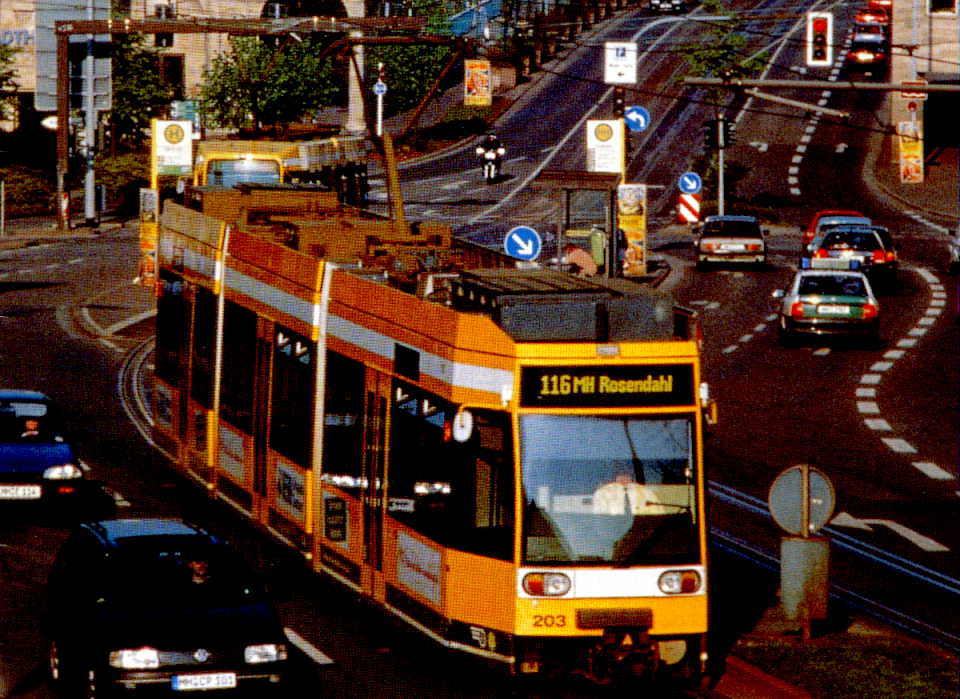
The Light Rail Now Project can be contacted at: Light Rail Now! |
1. LRT attracts new riders. Typically, from 30% to 50% of rail transit riders are new to the transit system and have automobiles at home which they could use but choose not to. The same people who shun bus transit are attracted by the fast, reliable service and smooth, pollution-free ride which electrified, guided transit can offer. 2. LRT reduces transit costs. Costs for rail transit are typically lower – in some cases, as much as 50% less per passenger-mile than for bus transit. This reduces annual transit operating costs and public subsidy. Rail transit in a heavily-traveled core area frees up operating funds and buses, thereby indirectly serving other areas. For many transit systems, the installation of cost-efficient light rail in heavy, "spine" corridors will enable the transit agency to re-deploy buses currently used for downtown service to provide improved service for suburbs and crosstown corridors.
Other transit serving only a highway corridor must rely on feeder buses or cars to bring people to transit stations which are frequently located in unattractive areas. 4. LRT is safe. Passengers traveling by rail are very safe and neighborhoods through which the system passes are also much safer. A single light rail vehicle removes 60 to 125 cars from the road and signal systems make the neighborhoods safer for local traffic and pedestrians. 5. LRT reduces pollution. Electrified light rail does not pollute near our homes and may not pollute at all in areas relying on water- and wind-generated power. Getting people out of their cars will preserve our clean air and clean water. 6. LRT fits anywhere. it can run on the street, across the street, under the street, over the street, on railroad tracks, or in canal beds. Although it serves communities best when built on the surface, light rail can be run on elevated structures or in tunnels if necessary. Stations and right-of-way are compact and efficient.
7. LRT strengthens our downtowns. Downtown retail core areas which have struggled for years, choked with automobile traffic and losing business to suburban malls, will see customers return – brought to the central business district by an attractive transit system. Non-retail businesses benefit from improved mobility for their workforce. 8. LRT enhances property values. Areas in the vicinity of light rail stations normally see an increase in land value and new, high-quality transit-oriented development encourages vibrant community centers. New homes and businesses can also reduce the property tax rate in an area. 9. LRT is quiet. Light rail vehicles produce less noise than diesel or other fuel-burning buses and much less noise than the equivalent volume of automobile traffic. Smooth, welded rails and vibration absorbing fasteners eliminate much of the noise we associate with rail travel.
This report has also been adapted from material provided by Edson L. Tennyson and other contributors to the Light Rail Progress Professional online discussion list. Rev. 2001/03/24 |
|
|
|